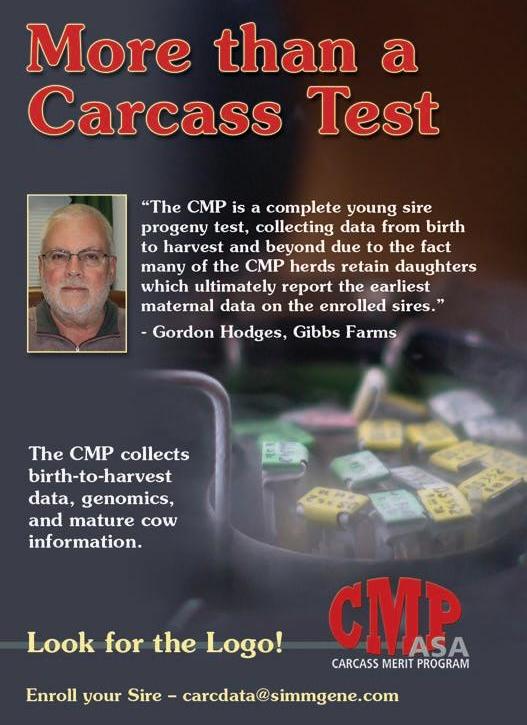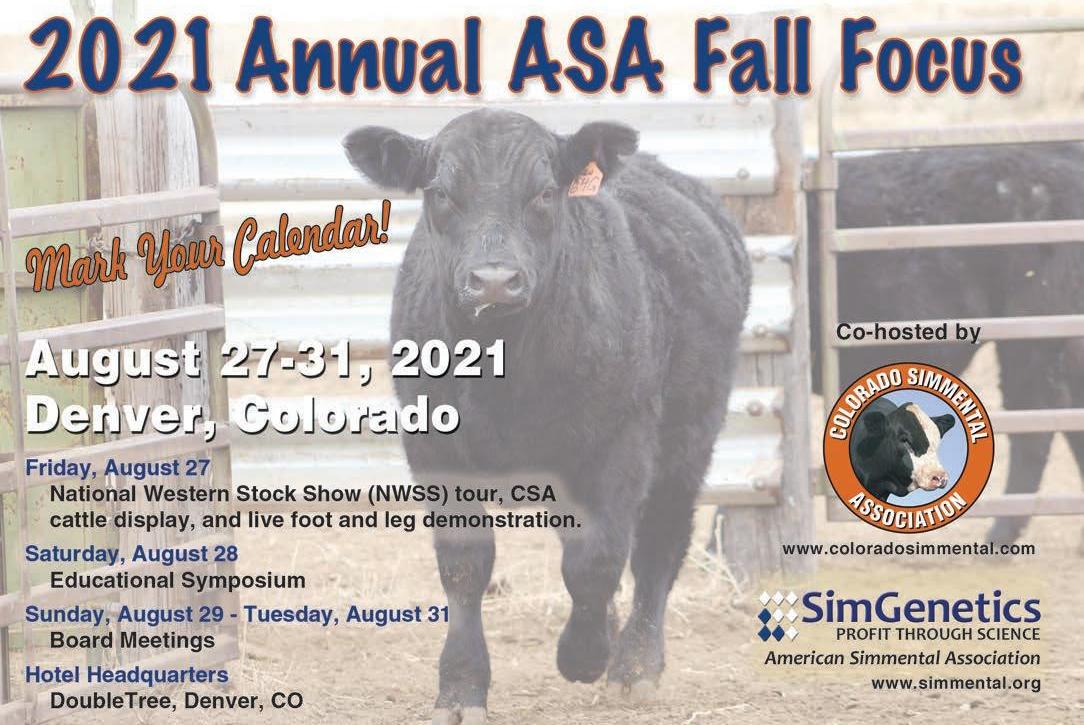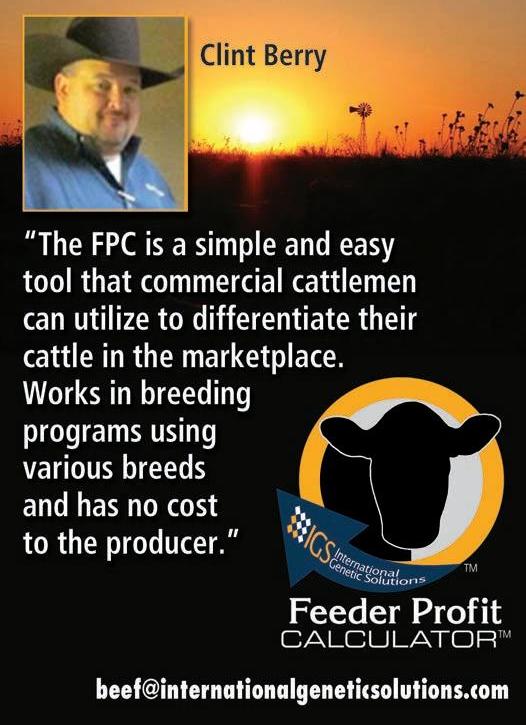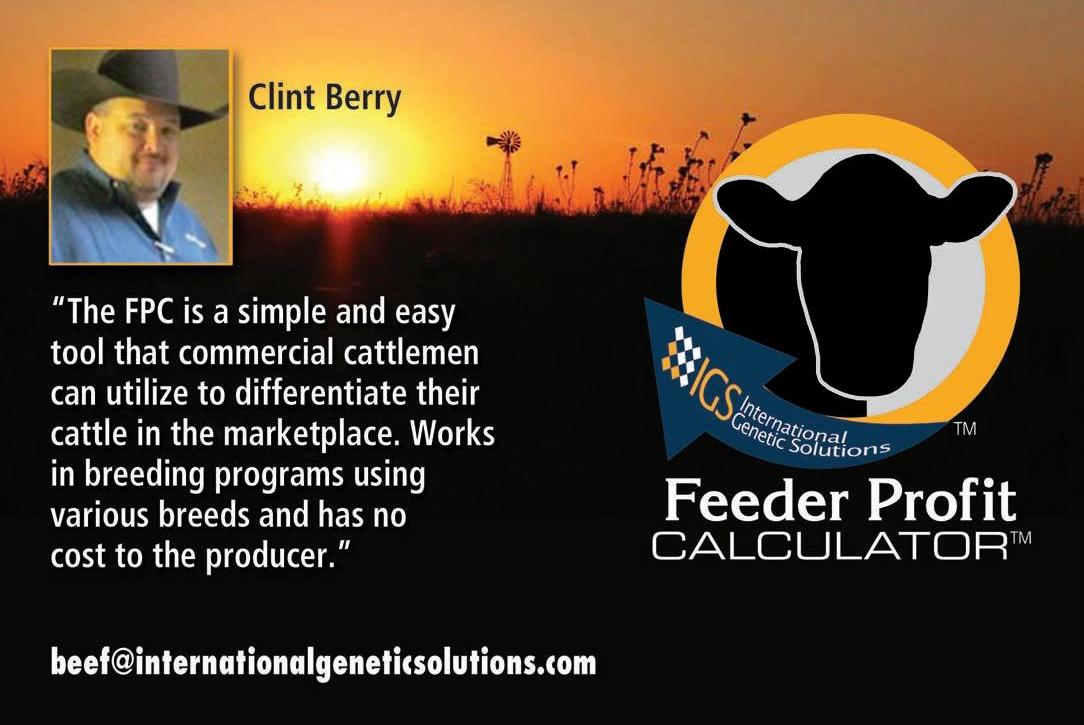
9 minute read
Fleckvieh Forum
By Larry Maxey, Founder and Superintendent, NAILE Fullblood Simmental Shows larryhmaxey@gmail.com
Author’s Note: This is the eleventh in the series of “Our Pioneers.” Much of the information here is from the blog of Susan Smith, The Early Years of Simmental in North America, and is used here with her permission. We will explore an old tagline used in the early years of the ASA that “The Cow Makes the Difference” and see where it leads.
Our Pioneers: Travers Smith & Simmental Breeders Limited
The last piece for this column ended in 1967, as Travers Smith had successfully managed to get the first imported Simmental from Europe to Alberta, Canada. This was the bull, Parisien, Canadian and American Simmental Associations registration #1. On September 26th, 1966, Smith formed Simmental Breeders Limited (SBL) to conduct all business affairs of imported cattle from Europe under. Travers and his SBL partners (identified in the April issue of the Register) were eager to make additional imports. In 1967, they applied for a second round of permits from the Canadian government, targeting the France/Switzerland route that had been used for Parisien. As time was running out — and with some anxiously awaiting investors — they received eight permits on July 19, 1967. One can only imagine the excitement the SBL group must have felt with the approval of such a large quantity. Travers encountered tremendous struggles in getting one animal, Parisien, to North America. Now they were faced with the daunting task of fulfilling the granted permits for eight.
In her blog dated Friday, June 11, 2010, Susan Smith references information from Chapter 2, 1967, of a book she began several years prior titled The Dream Lives to document the early history of SBL and Simmental in North America. She describes the makeup of the eight head of cattle for the second round of imports. Interestingly, there were seven Simmental and one Brown Swiss. There were three Simmental bulls as follows: Sultan MM 2156 (SBL 2X; ASA#4, CSA#3) born December 13, 1966; Capitaine MM 1236 (SBL 4Y; ASA#7, CSA#7) born February 5,1967; and Firn MM 7798 (SBL 5Y; ASA#8, CSA#8) born March 12,1967.
There were also four heifers, but the dates of birth weren’t available. They were Uganda (SBL 3X; CSA#2); Lotte (SBL 1Y; CSA#4); Bella (SBL 2Y; CSA#5); and Anita (SBL 3Y; CSA#6). The only other Swiss Simmental import of 1967/1968 was a bull calf named Bismark born February 20, 1967, and owned by LK Ranches Ltd., Bassano, Alberta. Please note that with Parisien carrying registration #1 in the CSA, the above list of animals imported by SBL carry the registration numbers of 2 through 8. Thus the first eight registered animals in the CSA herd book all carry the SBL prefix. One could easily conclude that the founding of SBL in 1966 formed the basis for the establishment of the CSA. This is very noteworthy, indeed! Now let’s shift gears and put into context what these foundation Simmentals meant to the upstarts, the CSA and ASA. While we often focus on the bull’s impact on the foundation of our breed — and certainly Sultan, Capitaine, and Firn left their mark — what about those females from the second round of imports identified above? The first Simmental progeny exported to the US was the fullblood bull Amor 1A. This occurred on August 11, 1970. He had sold for the earth-shattering price of $154,000. Adjusted for inflation, in 2021 dollars that equates to $1,064,000. The buyers were a private US syndicate consisting of one from Oklahoma and six from Texas.
Amor 1A at the Alberta–Montana border accompanied by Ruben Reyes, Albert West, Jesse Malone, and Travers Smith. This was undeniably an historic moment for North American Simmentals.
So, now you are probably asking, what does this have to do with the phrase “The Cow Makes the Difference”? Amor 1A was sired by Parisien. Amor’s dam was Anita, CSA #6. Anita was sired by Wachter and her dam was Alpenrosli. Anita was one of the four heifers selected for the second group of Simmental imports. The group of expert cattle people identified and chosen by Travers on his first trip to Switzerland and France to help in selection of the cattle were greatly responsible for picking the highest quality genetics. Anita is a testimonial to the capability grounded in a wealth of experience with Simmentals in Europe. It is easy to conclude that, yes, “The Cow Makes the Difference!” ■
References: “The Early Years of Simmental in North America” by Susan Smith, blog, https://simmental-sbl.blogspot.com/ 2010/05/year-it-all-began-in-north-america-1966.html?m=0
by Randie Culbertson, PhD, IGS Lead Geneticist
Expected progeny difference, or EPD, is defined as the expected difference between the average performance of an individual’s progeny and the average performance of ALL progeny. In the context of genetic improvement, EPD are very powerful tools for cattle breeders to make genetic improvement in their herds.
EPD vs. EPDs
Historically in editorial content, the ASA has used EPDs for the plural form of EPD. However, expected progeny differences is abbreviated EPD for both singular and plural forms. From now on, the ASA Publication will adopt the scientific approach of using EPD for both singular and plural abbreviations.
Why
Why use EPD? Simple: genetic improvement! Underlying the performance of every animal is both environment and genetics. Every calf on an operation has a genetic propensity for performance of a trait. When genetic potential is lacking, even when an ideal environment is provided, the calf will have limited performance. To maximize performance, both environment and genetics need to be maximized. Phenotypic selection for improvement can be utilized, but by selecting on phenotype the rate of improvement is significantly slower. When selecting on phenotype, you are selecting for the underlying genetics, but you are also selecting the environmental influences that cannot be passed onto offspring. Phenotypic selection gives no indication of how much of the performance is influenced by the environment. EPD account for environmental differences and influences as well as genetics. EPD therefore help you to select for the heritable portion of a trait that can be passed to offspring. Using EPD to select for traits of interest will dramatically increase the rate of improvement, especially when compared to using phenotypic selection.
What
In the most basic sense, an EPD is a solution resulting
from the genetic evaluation. The evaluation is a series of statistical and mathematical models where performance, DNA, and pedigree information are included. These statistical and mathematical models are developed based on our knowledge of biology and genetic inheritance. Utilizing the information provided, these models are able to differentiate environmental influence from genetic influence to create a prediction of genetic potential for an animal as a parent.
When we consider an animal’s performance, there are two major influential components: genetics and environment. Environmental factors are any effect that is non-genetic and can range from management, to the physical environment, to the maternal influence of the dam on a calf. The environmental influences are important to an animal’s own performance, but they cannot be passed on to the next generation of calves. Appropriately accounting for environmental factors is crucial for reliable EPD. When developing the models for a genetic evaluation, tremendous focus is placed on how to account for all non-genetic influences on a trait. The assignment of contemporary groups (animals raised in the same environment with the same opportunities to grow, conceive, marble, etc.) is crucial in accounting for the non-genetic components that would influence an animal’s performance. With environmental effects properly accounted for, the evaluation solves for the genetic effects using animal relationships from the pedigree. The pedigree maps out all known relationships to an individual animal and the relatives of that individual. These relationships are assigned numerical values to represent the amount of genetics shared. For example, calf A shares 50% of his genes from his sire and 25% of his genes from a half-sib. If the halfsiblings were inbred, the percentage of genes shared would be higher. The evaluation uses these relationship ties within the pedigree in conjunction with performance records and environmental effects, to solve for the genetic potential of animals for a given trait. It is important to point out a biological law of genetic inheritance referred to as the law of independent assortment. The law of independent assortment states that the segregation of genes is independent during the formation of reproductive cells. In other words, each parent possesses two versions of a gene, but only one version is passed onto progeny. Which of the two genes that is passed onto each individual progeny is completely random. This randomness leads to genetic diversity and allows for the ability to make genetic improvement on traits. If we consider full sibs, these calves will share 100% of their genes according to their pedigree, but there will be differences in their performance. These differences in performance are in part attributed to the difference in gene
versions inherited. In the absence of performance data, these two animals would have the same EPD, but once performance or DNA information is included in the evaluation, their EPD will begin to deviate from each other as the evaluation begins to account for the difference in the genes inherited from their parents. How does DNA and genomic testing fit into all this? When an animal has genomic information included in the evaluation, it allows us to identify the actual genes, or markers, the animal has inherited. If we know that an animal has specific markers for a trait and how those markers contribute to a trait, this increases the reliability and predictive power of the EPD. If we consider the genomic results for a pair of full sibs, calf A has markers that contribute to additional pounds at weaning, while calf B has markers that do not contribute additional weight at weaning. As a result, there will be a deviation in their EPD since the genomics give a clear indication of which genes were inherited by each calf. Genomics will also increase the accuracy as it reduces the uncertainty of which genes a specific animal has available to pass on to progeny. Submitting DNA does NOT replace the value of submitting phenotypes. Although DNA markers improve the accuracy of an EPD by reducing the uncertainty of the genes an individual has, these markers only explain a small percentage of the genetic variation of a trait. Traits included in genetic evaluations are controlled by thousands and thousands of genes, where genomics may only identify a small portion of the genes contributing to the phenotype. Reporting the phenotype as well as DNA will increase the overall reliability of the EPD. ■
In the second article of this two part series, we will focus on how and when it is appropriate to use an EPD. The “how” will focus on how to use EPD when making selection decisions for your herd as well as how accuracies and percentile ranks contribute to using EPD. The “when” will compare and contrast the use of phenotypes in context of making genetic selection.











